Why Jordan Chardonnay Switched to Diam Corks
We humans live by our senses, and wine stimulates them. When wine is at the dinner table, all senses are alive. We smell the butter, oregano and thyme of a dish, and we hear the “pop” of a wine cork. We start to anticipate the wine’s scents and its taste before and after each bite.
One of a winemaker’s greatest fears is that you hear that glorious “pop” and experience a wine’s esters for the first time, but it smells nothing like you expected. Dull. Moldy newspaper. Maybe a hint of wet dog. All of these “off” scents can come from a bad cork finding its way into a bottle of wine. Though this happens rarely with a bottle of Jordan, it can.
That is why, after making 40 vintages of Jordan Chardonnay, we decided to seal our singular white wine with a technical cork closure for the first time. This was by no means a fast or easy decision. In our pursuit to eliminate cork-tainted bottles of Jordan, we spent years conducting experiments to find an alternative that met our standards for quality and consistency—and one that is made sustainably from natural cork. The shift to the Diam cork became official with the 2019 vintage of Jordan Chardonnay. It’s a fitting way to celebrate the release of our 40th vintage this year. Origine by Diam® is a completely natural product comprised of cork and beeswax, held together by a plant-based binding agent. Most of all, it’s guaranteed to be taint-free. Here are five reasons why we said goodbye to traditional corks for Jordan Chardonnay.
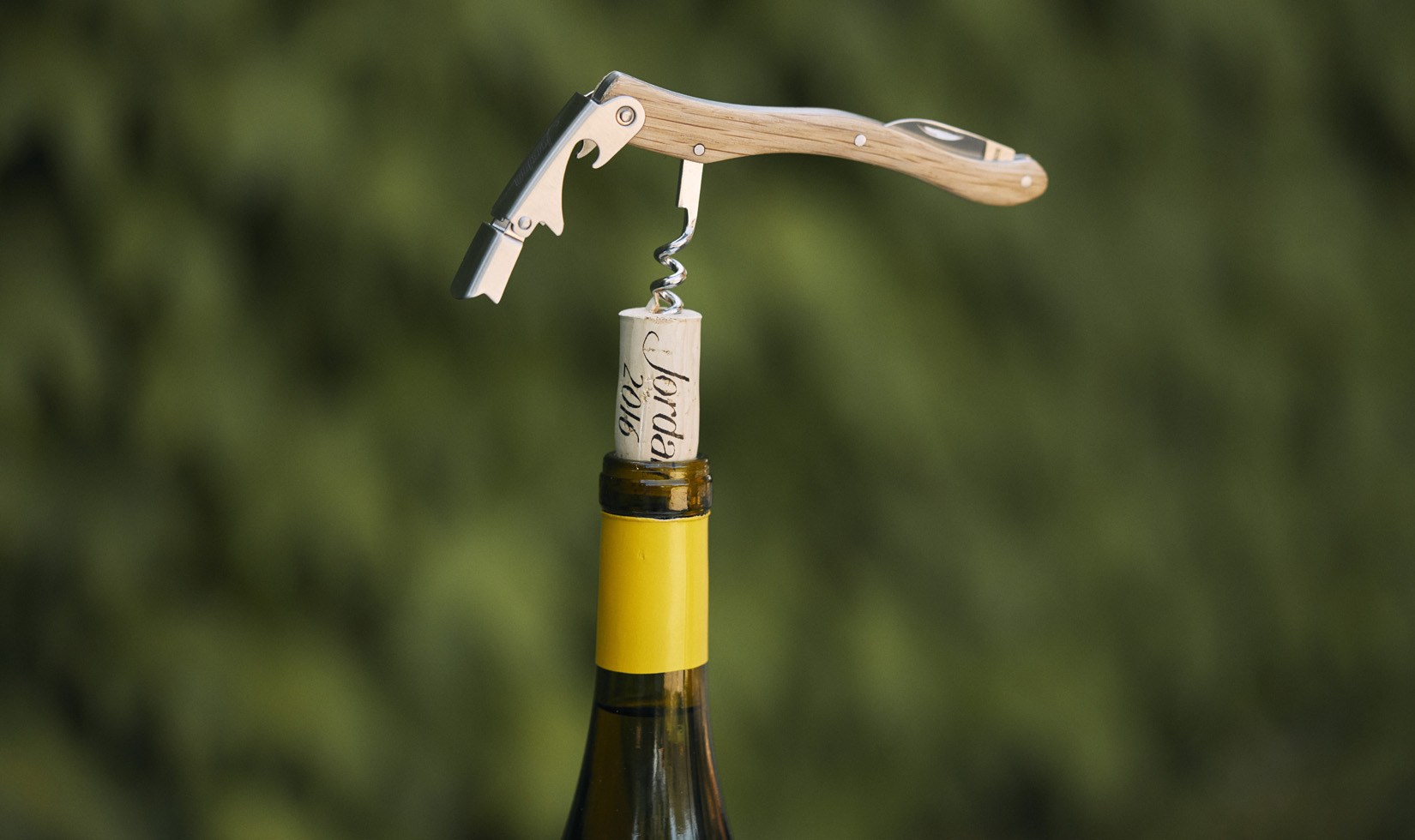
We’ve seen an increase in natural corks tainted with TCA in the last five years.
2,4,6-Trichloroanisole, or TCA for short, is a natural compound that forms on cork. It’s been the proverbial thorn in every winemaker’s side since the advent of glass wine bottles and corks in the 1600s; up to 10 percent of all wine corks, made from tree bark in Portugal and Spain, are estimated to be tainted with TCA. Until recently, the only way to guarantee no TCA or minimal cork taint risk was to buy the highest quality cork and pay extra for hand-sorting, and do your own sorting and testing again back at the winery laboratory. That’s what Jordan has done with both wines for decades and will continue to do for our cabernet. A decade ago, during my first years managing corks and bottling at Jordan, Portugal’s cork industry made huge strides in decreasing the incidence of TCA in their corks. We turned down every cork supplier that was trying to sell us the latest taint-free closure because we encountered very few corked bottles in our tests before bottling. Unfortunately, that changed three years ago. We aren’t quite sure why the incidence of TCA increased with our chardonnay corks, which are shorter than those used for cabernet, but it has. After all of the energy and money we put into every vintage to make sure that the wine in the bottle is perfect, I just couldn’t go back to the old days. Even one corked bottle per vintage is too many for me. Today, winemakers have access to several alternative closures that are sustainable, natural and protect the wine better than a traditional cork, such as Diam. Diam is natural cork that is crumbled and cleaned, leaving it free of any TCA and off-aromas.
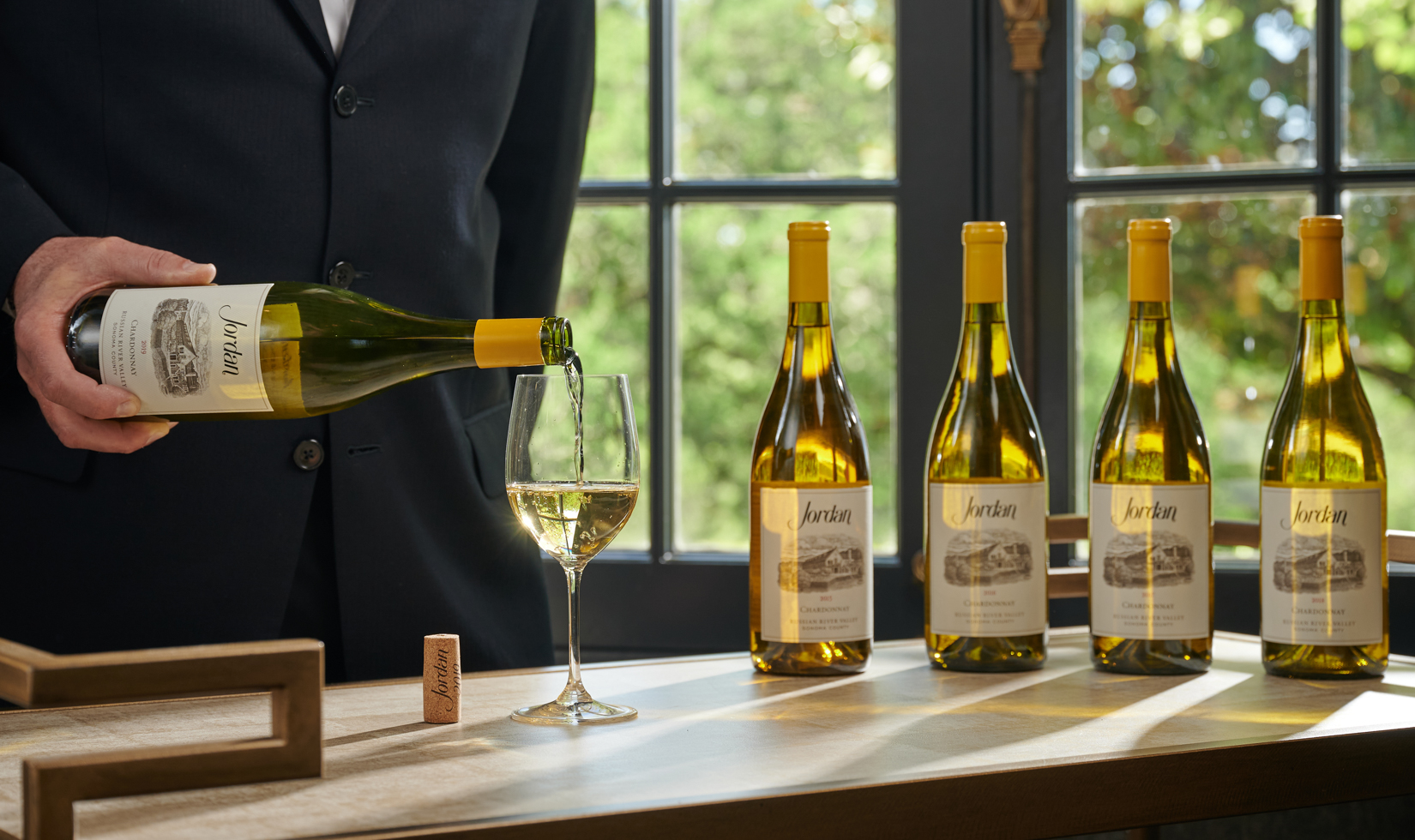
In experiments conducted with Jordan Chardonnay, we preferred wines closed with Origine by Diam® corks.
Because the quality bar is extremely high at Jordan, changing wine closures was not a decision that could be made quickly. I began following Diam when it became an industry buzzword in 2009, and over the years, I’ve stayed up to date with the company’s research and kept records of which wineries made the switch. Research and experiments are a major part of winemaking, and while I am not always ready to make changes, I recognize that it is best to test new techniques and products for impact and efficacy, so we have historical data in case we ever want to seriously consider them for Jordan wines. From screwcaps to plastic corks, we’ve tested and rejected them all—and Diam was the latest tool that warranted a trial. First, we tested the consistency of both cork types through aroma evaluation. We opened different bottles from multiple cases of the 2018 vintage—some aged with the natural cork and others with Diam—and found that the aromas and flavors were identical in every bottle with Diam, as well as more vibrant and expressive. The round mouthfeel complexity that comes with bottle age was consistent across the Diam bottles as well. The natural cork-aged wine, however, had slight variations in aromas, flavors and texture within each case due to their natural elasticity and tiny holes. While natural cork is a phenomenal closure, Diam offers us a level of sensory consistency never possible until now. Consistency is a cornerstone of the Jordan house style.
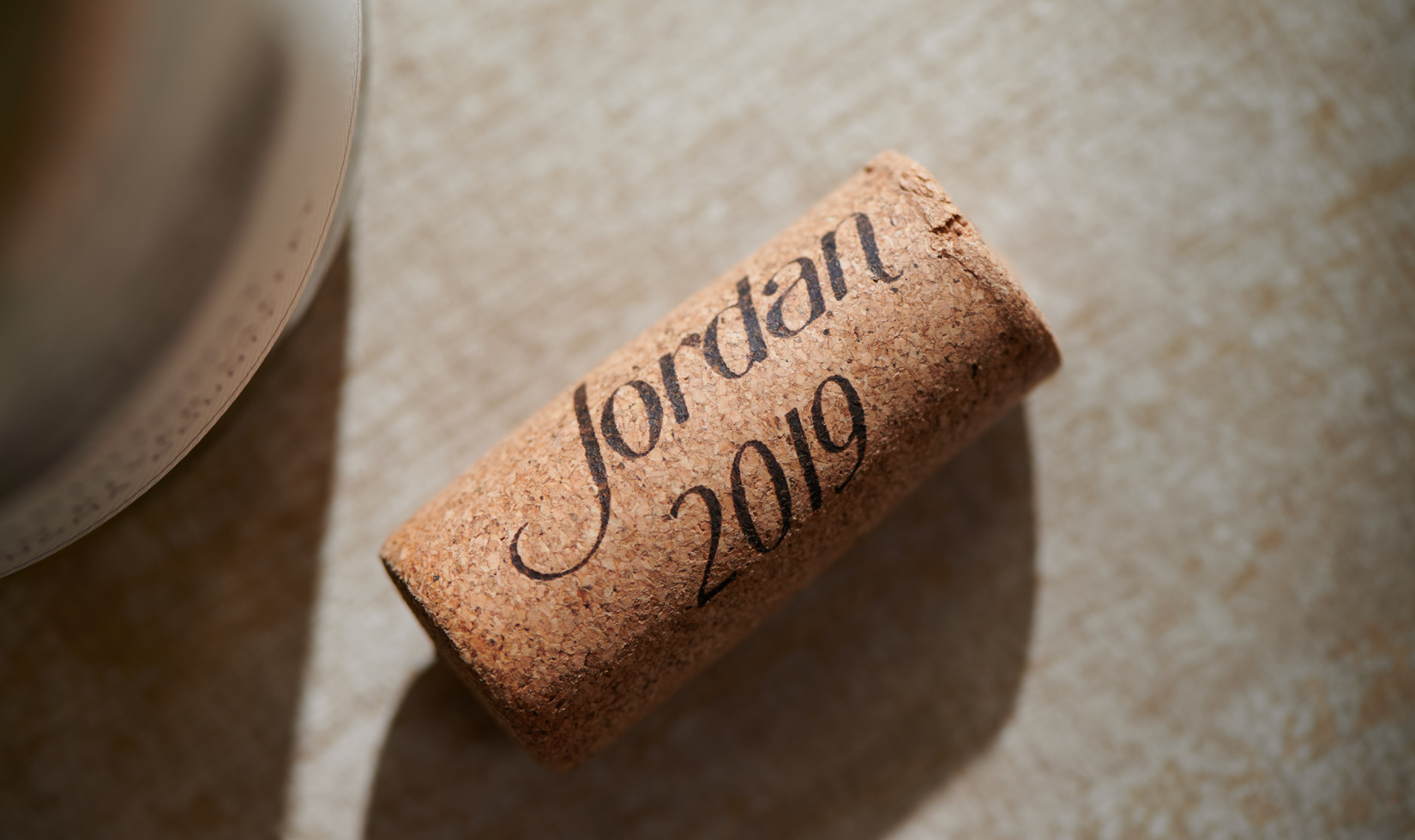
Being able to control the oxygen level inside the bottle is a winemaker’s dream.
Having the right amount of oxygen inside the bottle is key in aging wines. Too much oxygen will age wine prematurely and too little oxygen will retard the aging process. With natural cork, there is no consistency of how much oxygen will get into the bottle for two reasons. First, a little bit of oxygen enters a natural cork when it’s placed in a bottle. Second, the small holes and crevices that occur naturally in cork hold oxygen. While we purchase the highest quality corks with the smallest crevices, the amount of oxygen that seeps into the wine through natural cork is inconsistent, and that means inconsistency in the wine. Cork holes can also lead to leakage of wine during cellaring. Diam corks are made of natural cork pieces that are treated—basically the same extraction process used in producing decaffeinated coffee—and pressed back together using beeswax and plant-based binders. The binding process creates corks with identical, tiny oxygen levels that flow from within and through the cork, so every wine bottled ages at the same rate, and there’s minimal chance of leakage during aging. Diam also controls how much oxygen will live within the cork and allows winemakers to choose the level they want.
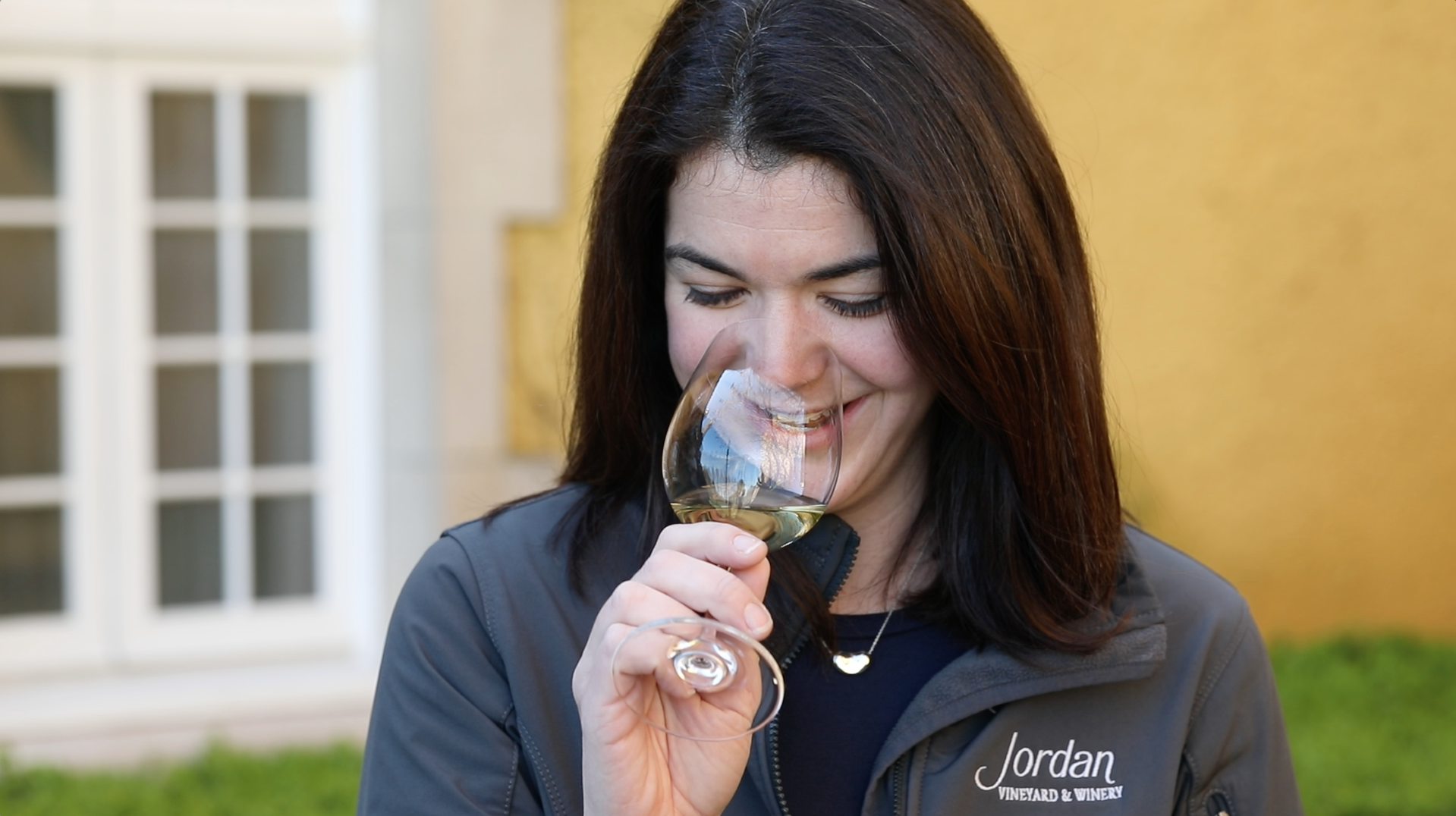
Respected peers who have used Diam products for years strongly endorsed their lack of cork taint, as well as the consistency of ageability for the wine.
When I was encountering issues with finding clean cork lots from Portugal, we conducted a competitive tasting of Jordan Chardonnay against a number of top Burgundy producers in 2017. Tastings like this are typical at Jordan, but what I discovered while uncorking the bottles was not: The majority of the French wines were closed with Diam. And these were iconic producers, such as Domaine Faiveley, William Fevre, Olivier LeFlaive and Louis Jadot, to name a few. It gave me pause. Top domestic winemakers, such as Shafer in Napa Valley and Ramey Wine Cellars in Sonoma County, have used Diam for several years, but I didn’t realize the French had also adopted this new technology. Around the same time, I was among a group of winemakers asked to present an aged wine and a current release vintage to sommeliers. Sonoma-Cutrer, Ramey and Jordan were the three producers presenting chardonnays, and David Ramey focused his entire presentation on the benefits of Diam closures. Ramey explained that all bottles inside a 10-year-old case of Ramey Chardonnay sealed under natural cork tasted drastically different, while the current release bottles under Diam tasted the same. At this point, I knew a trial was imperative.
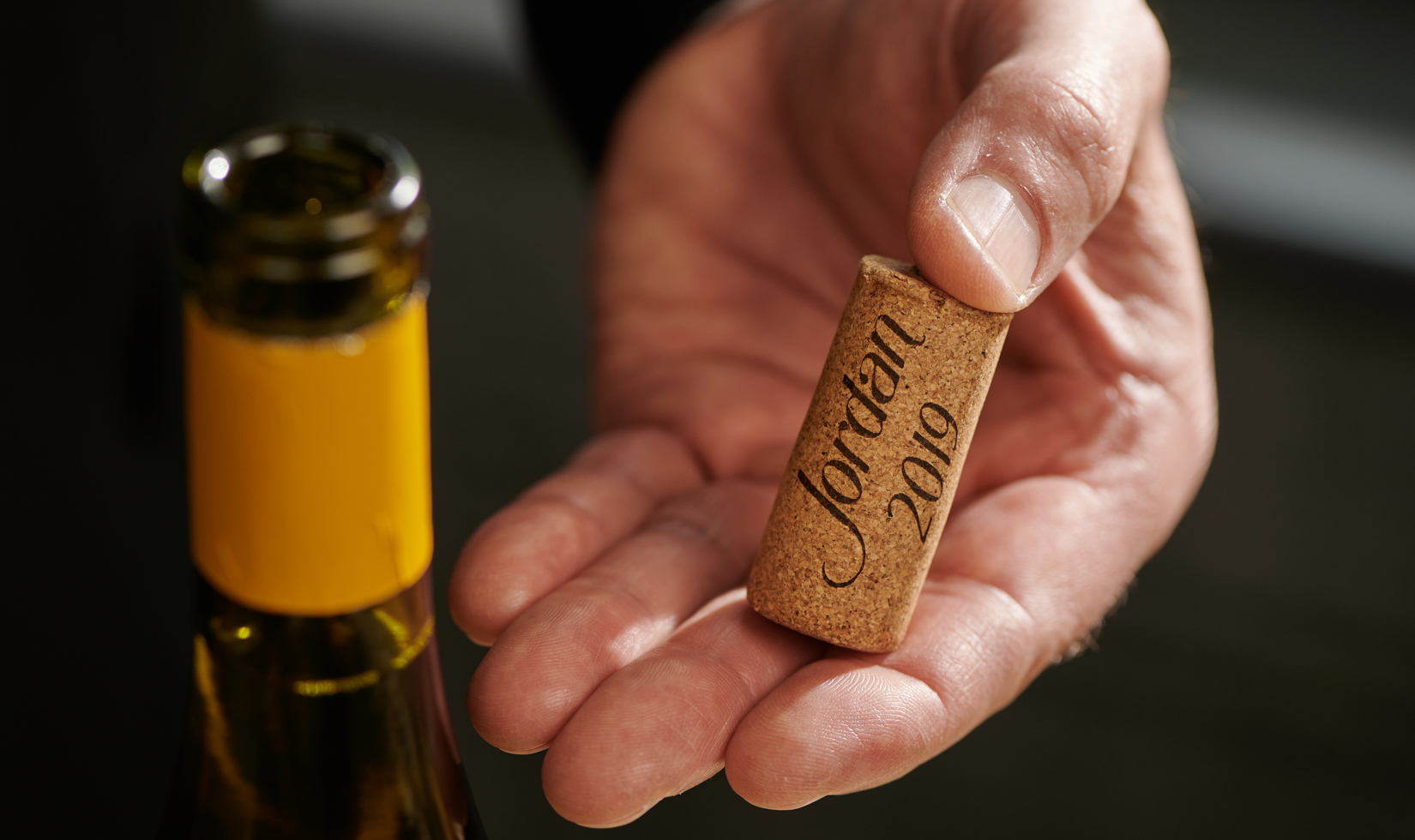
Our white wine is consumed within a few years and is rarely aged as long as our cabernet.
Although Jordan Chardonnay can age beautifully for up to 10 years or more, most of our fans drink this wine within a few years of the vintage. Origine by Diam® is a wonderful cork for chardonnay bottles because the amount of oxygen introduced to the wine within the first few months is the perfect amount of oxygen to showcase the wine’s freshness. The slow, consistent release of oxygen throughout the aging period ensures that the wine will age gracefully while maintaining its freshness. We are currently conducting a trial of Origine by Diam® on a few cases of Jordan Cabernet Sauvignon, but since our cabernet is aged for 2-3 decades or even more, we cannot confidently make the switch with Jordan Cabernet until long-term research (20-plus years) is available on ageability of the Diam cork. The first Diam cork was introduced in 2005, so we have many more years until the results from red wines aged with Diam are revealed.
I’ve been in charge of cork quality control and bottling at Jordan since 2007. My top priority is making sure that every bottle of Jordan tastes like it did when we bottled it. Natural corks with the highest quality classification are a wonderful closure, and they are my preferred choice for wines meant to age, such as Jordan Cabernet Sauvignon. But with the arrival of the Diam cork, I’m thrilled that every customer who opens a bottle of Jordan Chardonnay will experience the exact same aromas and flavors that I tasted when I made the final blend.
The post Why Jordan Chardonnay Switched to Diam Corks appeared first on Jordan Winery.
